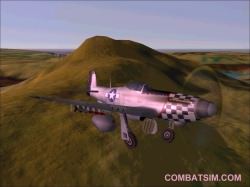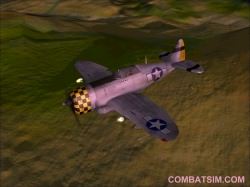| GeForce 256 and Savage2000 by Leonard "Viking1" Hjalmarson |
||||
|
A few days ago S3 announced its next-generation graphics platform, the Savage2000. Savage2000 delivers a fill rate of 700+ MegaTexels/second, twice the speed of the current single pixel/dual texture architectures. Scheduled to be available on retail shelves for Christmas, Diamond's Savage2000 product will be a sub-$250 solution for gamers. At the same time Nvidia released more information on its next generation 3d accelerator, the GeForce 256, a product that they are calling a GPU, or Graphics Processing Unit, an acronym that will likely stick since it reflects the current language describing processing elements in PC systems: the CPU and FPU. Revolution or Evolution? It seems inevitable that the PC system would evolve in this direction. PC video boards with specialized hardware designed to accelerate graphics processing have been available for more than a decade, but it was 3dfx who stepped in only a few years ago with a dedicated piece of hardware that launched the gaming revolution on the PC. The next logical step, incorporating a geometry accelerator on consumer level graphics boards, was inevitable. Whether you think these new products are revolutionary or evolutionay, the result is the same: improved gaming performance and a more realistic environment. Initially, the investment will be a bit higher, but inevitably prices will come down and some of these chips will even be integrated into mainboards. At the moment we only have two manufacturers releasing details of their next generation chips: S3 and Nvidia. Both are clear contenders for your hardware dollars for Christmas upgrades. Nvidia, however, is telling us that we will see hardware on the shelves in late September! Let's compare what we know, make some educated guesses, and look forward to the gaming revolution of 1999. Thanks for the Memory Crooning like Bob Hope, let's sail into the nether realms of memory. Both newly announced products will sport as much local memory as the average gaming PC had on board one year ago. The pace of change in this industry is astonishing! The maximum memory addressable by the Savage2000 is 64 MB. The maximum memory addressable by the GeForce 256 is 128 MB. This begs the question of whether AGP is a relevant technology any more? While AGP was a good idea when memory was expensive and rare, it seems to be going the way of the Dodo. But even though ocal memory is more effective than non local, AGP will still be a significant technology. As game developers continue to push the hardware boundaries, there will still be an advantage to keeping some textures on board with the option of accessing others via main memory. While the memory limit of the Savage2000 is half that of the GeForce 256, most of us will not care, especially in the next twelve months. Initial offerings of the GeForce may not even sport the full 128 MB of memory. In order for games to take advantage of that much memory they will probably need special routines (software support) and they will probably need to be written for DX7. Games in late development now aren't likely to benefit much from local memory beyond 32 MB, and only games written for DX7 will benefit from onboard transformation and lighting engines.
 P51 in B17 II There are exceptions, however. B17 II for example, was written originally for DX6 and wouldn't have benefited by the transformation and lighting engines of the S2000 and GeForce 256. With the release date moving back to Q1, 2000, however, Wayward Design has announced that B17 II will fully support DX7 and will enjoy huge benefits from the onboard T&L engines of the new video hardware. |
Just what is that raw throughput? I've charted it for you above in comparison to the current champ, the V3 3500. The most incredible thing about this chart is that it makes the current champ, released only weeks ago, look like last year's news! Fill Me In The Savage2000 has a dual pixel/dual texture pipeline (a four texel architecture) that delivers a fill rate of 700+ MegaTexels/second, twice the speed of today's single pixel/dual texture architectures. Similarly, the GeForce 256 has a four pixel pipeline and can render two textures in one clock cycle. But while S3 revealed the fill rate of their chip, Nvidia did not. So what is the actual fill rate of the GeForce 256? The lowest figure mentioned was 480 M/pixels per second, but there will be variants of the GeForce and Nvidia has not given a straight answer as to whether an SLI configuration is possible. It's likely that the fastest GeForce in 1999 will rival the fill rate of the Savage2000. But the GeForce incorporates a full geometry engine and 23 million transistors, with 50 Gigaflops of floating-point calculation capability dedicated to 3D! Somewhere between two and three times the power of a Pentium III CPU, the full power of this chip won't be realized on a single processor machine or on our current CPUs. Perhaps by the time we hit the 1 GHz processors in early 2000 we will begin to see the true power of this GPU.
 P47 in B17 II How Fierce is Savage? This might make it seem that S3s new chip is already outdated, especially since the GeForce will be on the shelves in late September. I don't think that's the case, however, since the price point of the Savage2000 is likely to be as much as $100 lower than the GeForce 256. Twice the power of a V3500 in late November for about $200 US may look very attractive. The wild card, of course, is that we don't know EXACTLY what 3dfx has up their collective sleeve. Their technology demo was impressive and we know they are usually leading the pack (see our recent 3dfx Update.) Whichever board you choose this fall, you will get onboard transform and lighting (T&L). S3 claims their S3TL engine will deliver 4-10x the polygon and lighting complexity of today's fastest PC applications. The S3TL engine delivers up to 8 dynamic hardware lights at 3X the performance of current CPUs. The GeForce T&L engine will likely be even more powerful. So... What Does It All Mean? This changes the way I would currently shop for a video board. I might personally be inclined to look for a cheaper solution than I would have done a few weeks ago. For example, if you already have a fairly current CPU (400 MHz or better) but are in need of new video hardware, you might want to settle for a Banshee or TNT2 vanilla board. Either of these options will get you 16 MB of onboard memory and a fairly powerful 3d/2d single board solution. If you have the dollars to spend and want the best today, you are still left with some nice choices: the V3 3500, the TNT2 Ultra or the G400 MAX. But those who only want to make one video purchase this year or those don't want to worry about selling used video hardware should wait at least to the end of September to shop for video. Check out our recent reviews: 3dfx V3500-TV AGP, Millenium G400 MAX, Diamond Viper V770, Maxi Gamer Xentor 32. Join a discussion forum on this article by clicking HERE.
|
|||
|
Copyright © 1997 - 2000 COMBATSIM.COM, INC. All Rights Reserved. Last Updated September 3rd, 1999 |
||||
